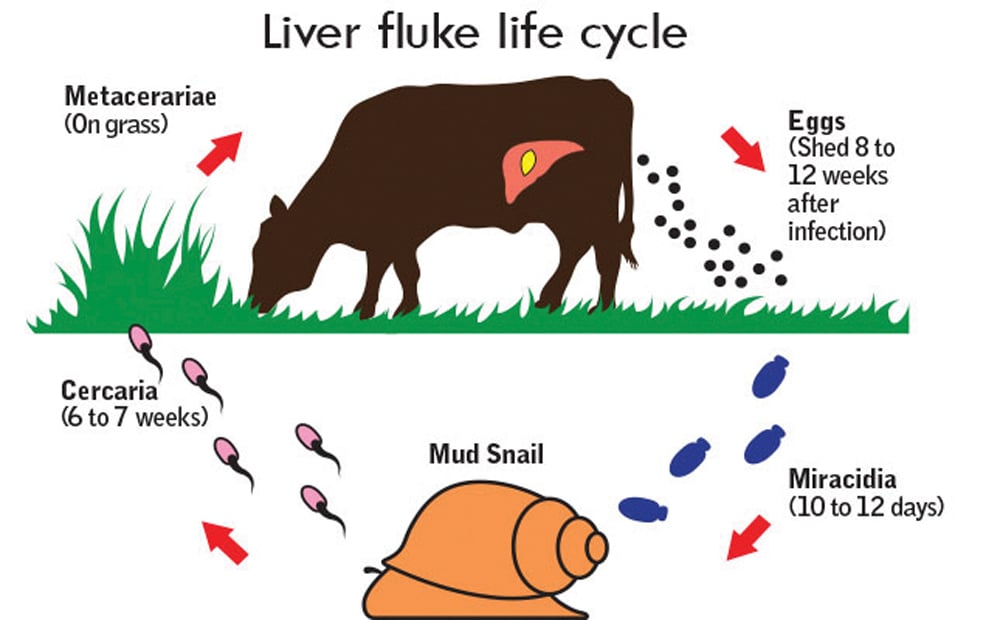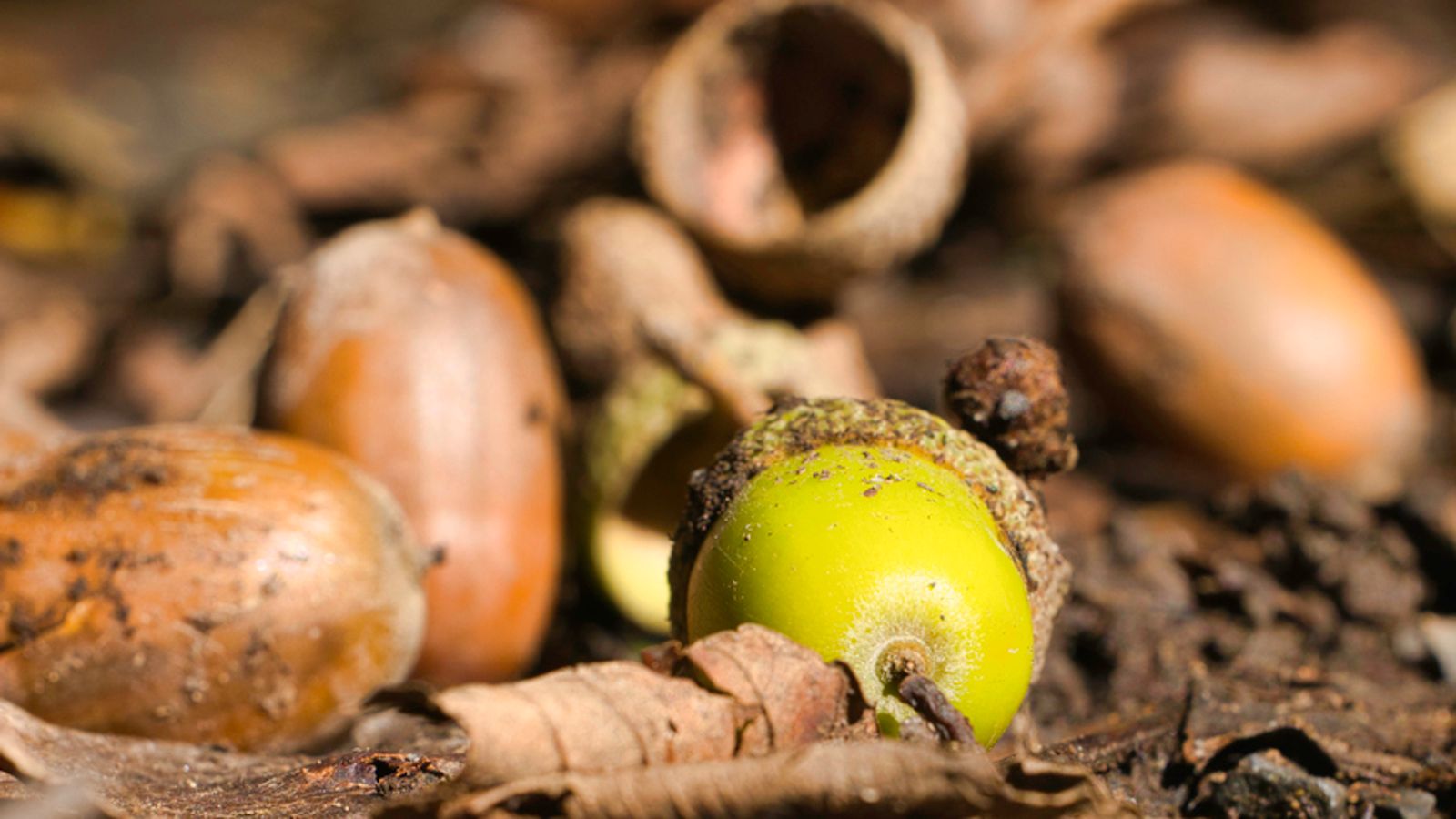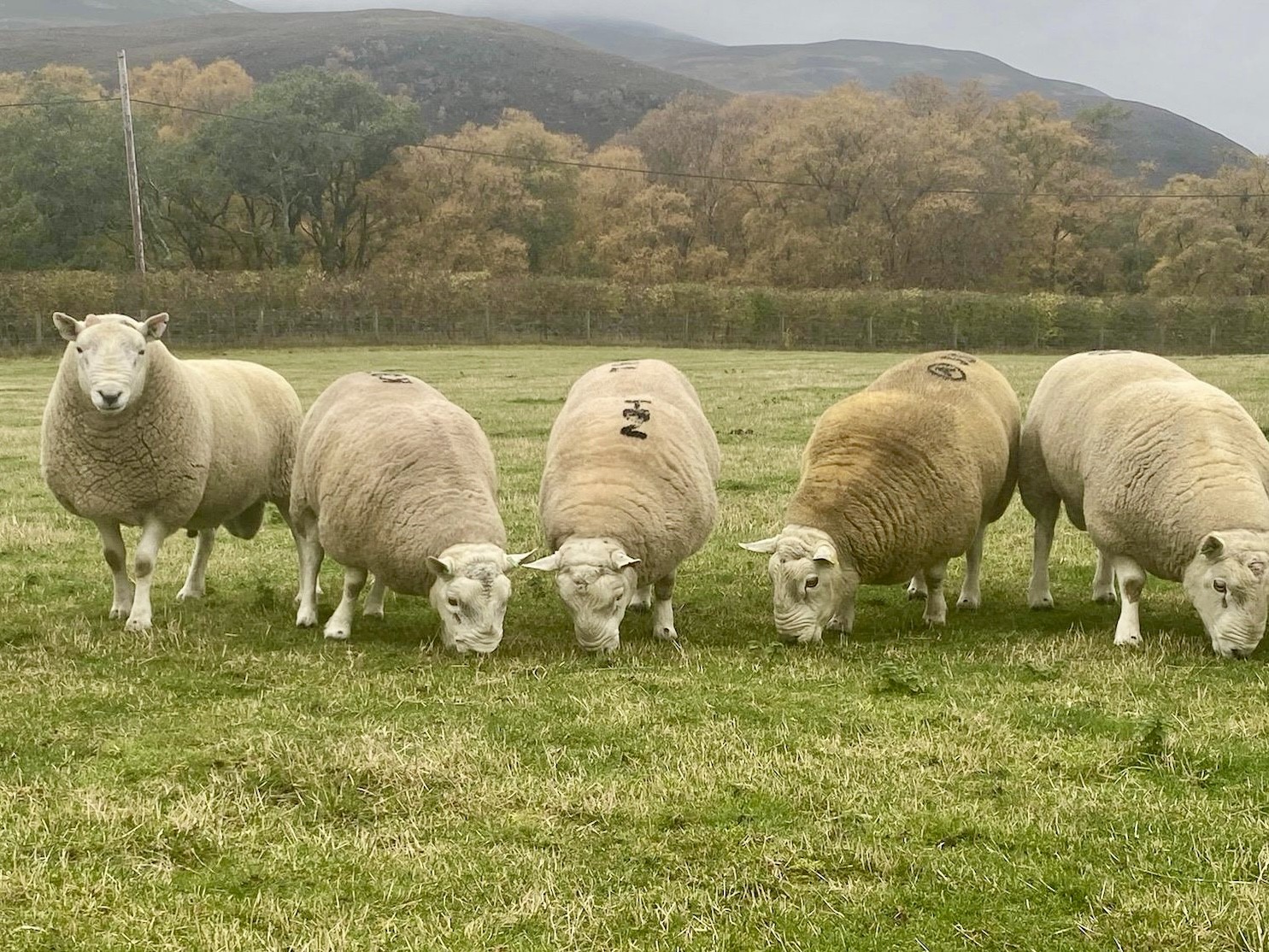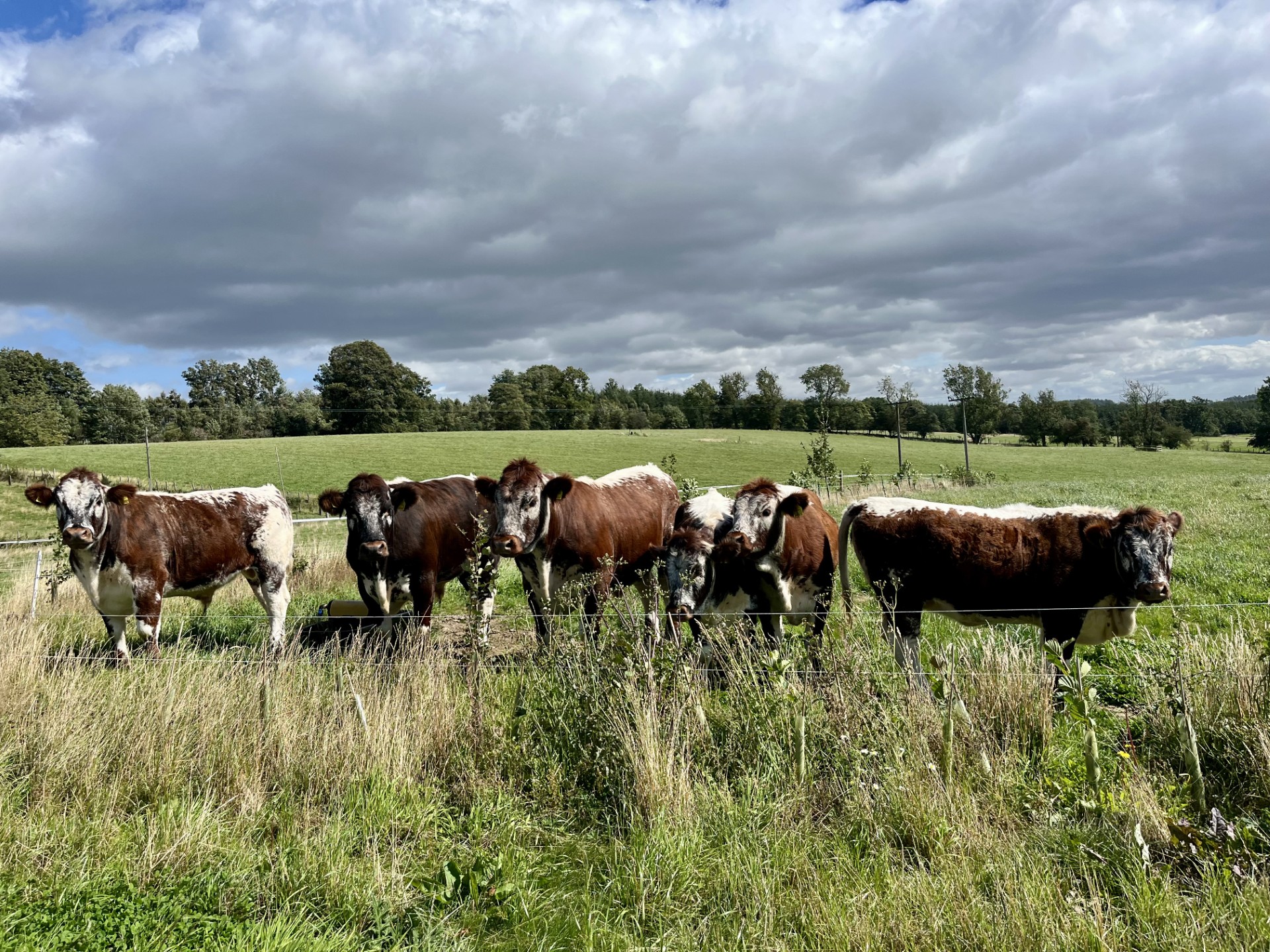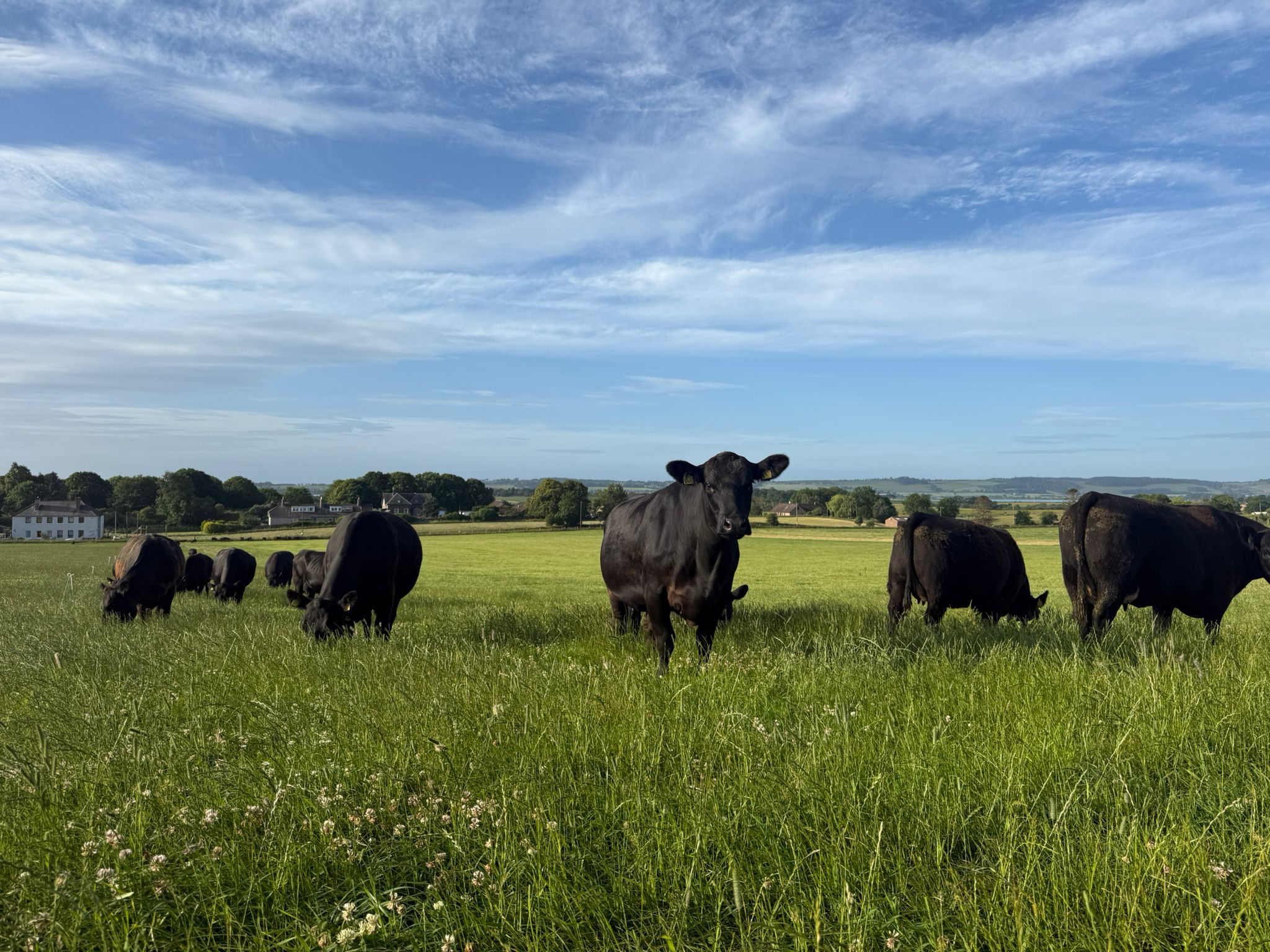Farm Newsletter May 2025
The start of May sees us continuing to be blessed by great weather – the countryside is looking superb as we go about our rounds with a patchwork of bright green and yellow fields and clear blue skies. (That’ll be it cursed now…) Whilst we’re still attending a few calvings, lambings and related problems, these have eased off a little and have given way to the more routine spring work such as bull fertility testing, setting up sync programmes, BVD testing and PDing autumn calvers.
The combination of lush grass growth and cool nights will lead to an elevated staggers risk. At-risk cows should have high mag buckets available and as an extra preventative measure straw can be provided at grass to slow gut transit time and reduce the risk.
The warm days and cool nights also raise the risk of Pasteurella pneumonia in lambs. Make sure Ovivac/Heptavac P+ vaccination schedules are started in good time to reduce the risk. Lambs can be done from three weeks of age, so don’t delay. Don’t forget pet lambs too, who will be at higher risk of clostridial disease.
Bluetongue vaccination – now an option in Scotland
As you’ll all be aware Bluetongue has been circulating on the continent and in parts of England for some time now, where in some places it has caused some devastating losses. There has been no circulating virus in Scotland, but with the summer round the corner we are now entering the highest risk of transmission due to increased midge populations and activity – the vector for the virus.
Until now use of vaccination in Scotland has not been authorised, but as of the start of May this has now changed, with vaccination becoming an option for those that want to use it.
There are a few vaccine brands available for use, with slight differences in their applications. However, as we’ve become used to with many vaccines, supply is currently a bit “sticky”. With Bluetongue currently nowhere near us it would be difficult for us to advise blanket vaccination, but the situation could change quickly. However, vaccination may be considered something of an insurance policy – hopefully you’ll never need it, but you’d be glad it was there if you do!
We would encourage everyone with concerns to speak to one of us regarding BTV vaccination, and indeed let us know ASAP if you would like to place an order. More info can also be found by clicking the link below.
Sheep Meeting – Flock Health Club – How to Not Worm Sheep
Thrums Flock Health Club will meet again this month and we would welcome anyone to come along and see what the club is all about. The subject for the evenings discussion will be “How to not worm sheep!” – an ambitious target perhaps, but we will be looking at the various ways in which we can reduce our reliance on wormers through grazing management, nutrition, genetics and targeted treatments with the aim of maintaining optimal production whilst reducing our reliance on chemicals and lessening our environmental impact.
The meeting will be held at 6pm on Monday 19th of May at the Strathmore Golf Centre near Alyth. Please contact Ed at the practice if you are interested in attending. The meeting is kindly sponsored by Elanco.
Fertility Testing in Bulls
A reminder that the majority of fertility issues and poor scans we still see every year are down to a bull issue, and the majority of these could have been avoided with a simple fertility test.
The gold standard is every bull, every year should be tested 6-8 weeks in advance of mating. Indeed this is now the norm on very many units, and with beef prices as they are, every extra calf on the ground is hugely valuable and with beef calf subsidies being paid on a 410d calving interval, a compact calving is critical as well.
A fit and fertile bull is absolutely critical to all this, but sadly we know that as much as a fifth of bulls are sub-fertile, but by being proactive we can take action to prevent these affecting herd performance. Remember, there is also still grant money available to go some way to covering the cost of bull testing via the Sustainable Farming Scheme.
New Louping Ill Vaccine – Support Needed
Louping Ill Virus in sheep has the potential to cause significant losses on ticky ground where the virus is present. It can also cause major losses in grouse populations as well as causing disease in cows, deer, hares and even humans. Several years ago the Louping Ill vaccine was withdrawn from the market as made little commercial sense for the manufacturer, leading to increased reliance on chemical tick control to protect livestock.
However, over the past few year the Moredun have been working on developing a new Louping Ill vaccine, which has so far been very successful. They are now looking for support to bring it to the market in the form of donations. If you are interested in Louping Ill and for more info please click the link below to take you to the Moredun website.
Next Embryo Transfer Day
Our IVF Embryo Transfer service continues to go well. Our next collection day will be Monday 9th of June and we still have a couple of spaces left. If anyone has a donor cow they would like to enroll, or to discuss embryo transfer in general please contact Andrew ASAP either at the surgery or on andrew@thrumsvet.co.uk
Pain Relief for Disbudding Calves
May will see the majority of Spring born calves being disbudded prior to turnout. 2-4 weeks is the ideal age to be doing this – the buds are easily felt but calves have not yet grown too strong – the bigger the calf the more painful the procedure. They can be done younger as well, but make sure the buds can be felt.
Caustic paste is an option but we tend to find the results either variable or poor, and must be done under 7 days of age.
When disbudding pain relief is not optional – it is a legal requirement that local anaesthetic be used prior to disbudding, and this should be given at least 5-10 minutes to be working.
However, you should also consider adding in an NSAID painkiller such as metacam. Local anaesthetic will start wearing off after about 6 hours but the bud sites will be painful for a few days. Metacam will significantly reduce this. Not only is this better welfare but it will mean the calves continue to suckle well, meaning no reduction in growth rate or immunity.
Ensure your irons are working well and hot. A calf crate will make the procedure far easier for man and beast also. Following the procedure monitor closely for infection and if there is any risk of flies at all then apply some spot-on on the top of the head.

